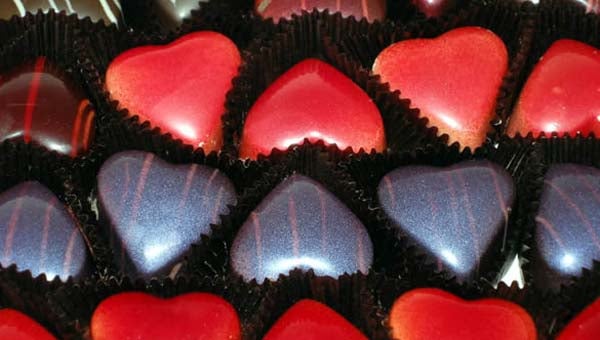In Good Taste: The origins of Valentine’s Day food traditions
Published 4:26 pm Thursday, June 25, 2015
By Carol Lynn Jackson
Life in Our Foothills, February 2015
The romantic aspects of Valentine’s Day and food have held their allure for centuries. Expressing love through sweets or sharing a meal with a loved one, who has not had a little fun with that?
There are certain foods and romantic cocktails associated with Valentine’s Day but how is that? What are the origins of these food traditions and indeed, of the day itself?
The details behind the history of Valentine’s Day, like many holidays, get a little blurred. Some historians believe the day is named after a Roman saint named Valentine. Legend says Valentine was a physician who fell in love with one of his patients, the blind daughter of an emperor.
What sainted him was his death sentence due to his religious beliefs. Yet the story goes that just prior to his execution he sent a note to the girl and signed it, “Your Valentine.” After his death, the blind girl was miraculously healed and able to read the letter.
So, what then of the foods that have become the holiday’s tradition? It’s believed that oysters, artichokes, caviar and chocolate leave you in the mood as aphrodisiacs. But are they real? The FDA claims that aphrodisiacs are “folklore.” But one can’t deny their indulgent properties and flavors.
What better way to leave a lasting impression than with romantic cocktails from the heart like the “Sweet Red Kiss” and the chocolate martini?
Here are more foods that have traditionally been used to celebrate both love and Valentine’s Day. Taste, sip, and enjoy.
Herbs
Basil, lavender, and rosemary are the three herbs most associated with Valentine’s Day. Basil is a traditional symbol of fertility and was often worn by women to signal their relationship status as “single.” The scent of lavender is not only relaxing, it is said to be an aphrodisiac. Just go with it, FDA. Rosemary has long been a symbol of love, with it being used frequently in wedding bouquets during the Middle Ages. (And as a way to mask lousy personal hygiene.)
Wine
The warm feelings one gets upon drinking a glass of wine have long been compared to the euphoria of love. This has easily made wine a symbol of the same. If you want to avoid the alcohol, cook with it.
Honey
Bees are traditionally a symbol of love because they and the birds have made telling the story of reproduction to young children manageable. But seriously, it’s because of the sweetness of honey and the bitterness of their sting that it is associated with love. I get it.
Strawberries
Their red color and heart shape make them the perfect fruit to celebrate love. Strawberries are also the symbol of Venus, the Roman goddess of love. Dip the fruit in, you guessed it, chocolate, and now it’s transformed as a Valentine’s Day marketable item in a new skin.
Chocolate
We won’t leave out the most popular Valentine’s Day food, even though it’s one of the more recent additions to a traditional list. Chocolate became a common gift during the Victorian era. Victorians upgraded to a romanticized theme from the medieval version of chivalry and courtly love. Richard Cadbury (yes, that Cadbury), a chocolatier who worked during the mid-1800s, not only developed a recipe for a creamier chocolate, but also dreamed up the special heart-shaped boxes associated with the holiday.






